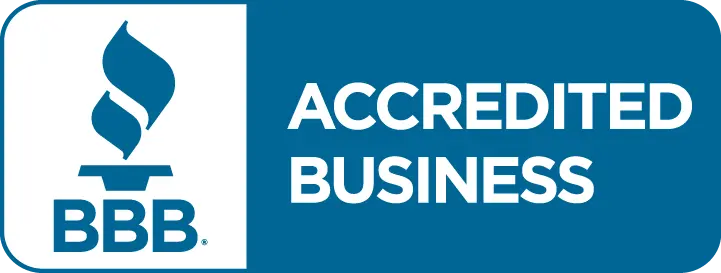The Possibilities of Commission Pay
Commission pay is synonymous with outside sales positions, but are there other possibilities of commission pay beyond reaching sales quotas?
What is a Commission Payment?
Definition: Commission pay is any money paid to an employee for the sale of a product or a service on behalf of their employer. Commission payment can be a set percentage of sales or a flat dollar amount based on sales volume. The most common commission structures are:
- Base salary + commission. These employees often receive a base salary that is lower than market rate for their positions, with the understanding that this salary will be supplemented through commission earning opportunities. Example: loan officer.
- Straight commission. These employees do not have the “safety net” of a base salary. Here, all compensation comes from commissions. This structure does best with seasoned sales professionals and for positions that qualify as exempt under the Department of Labor’s Outside Sales Exemption. Example: real estate agent.
- Draw against future commission. This commission structure is a hybrid of the two described above. A minimum base salary is guaranteed each pay period, but that base salary is drawn against future commissions. Example: car sales.
Commission Payments: The Fine Print
Commission pay is not attractive to everyone. It adds an element of uncertainty to an employee’s income that can be off-putting to the risk adverse or sales professionals who are new to their careers. Employers should keep attuned to their market and to those companies they compete with for staff to gauge the compensation design that will attract the most qualified and promising employees and really grow their business.
Additionally, members of your sales teams employed in positions that do not qualify for the DOL’s sales exemptions must receive the equivalent of at least minimum wage for all hours worked in each pay period and overtime for all hours greater than 40 in a work week.
There is, however, some flexibility with the timing of commission payments. Commission can be paid in conjunction with an employee’s base salary (if applicable) or at a completely separate time. For example, it is perfectly legal for an employee to receive her salary bi-weekly and her commission payments monthly.
Commission Payment: The Possibilities
Commission pay is an effective incentive to increase productivity and the rate of a company’s growth, but unless you are managing a team of outside sales professionals, it likely not a tool in your current incentive program. But should it be? Possibly.
The Retail Exemption. The Department of Labor allows commission for retail employees through its Retail Exemption, an exemption that can free qualified employers from their overtime rate obligations if their retail employees have sufficient commission earnings. With this exemption, the earnings of non-exempt employees can be driven by their sales numbers through a legally vetted method that will not increase their overtime pay rate.
For purposes of this exemption, qualified employers are:
- retail and service establishments where 75% of the annual dollar volume comes from the sale of goods and/or services
- the company must be in a recognized retail sales or services industry
- resale establishments do not qualify
Taking the long view. Another option is a commission program designed to recognize contributions beyond monthly sales quotas, such as:
- teamwork that supports company sales goals
- customer satisfaction
- lead generation
These programs reward employees for creating an atmosphere where future and repeat business become reliable sources of company income.
Commission vs. profit sharing. Many employers look for ways to incentivize employees to meet or exceed company sales goals, but not all have employees who meet the traditional definition of sales. For these companies, a profit sharing plan might be a good compromise. Both commission and profit sharing programs are designed to motivate employees for their efforts in reaching sales and business growth goals. This, however, is where the similarities end.
- Commission plans are a significant part of a sales employee’s compensation, whereas a profit sharing plan is generally pain in addition to a full market rate salary.
- Commission payments are generally paid out monthly to enforce the strong connection between reaching sales goals and increasing income, whereas profit sharing plans are generally paid out once a year.
- Commission programs are designed as incentives for sales professionals, whereas profit sharing programs generally reward all employees to some degree.
As labor markets continue to tighten, employers must utilize every tool in their arsenal to recruit and retain the best and the brightest. Although commission programs are – and will continue to be -synonymous with outside sales positions, companies may need to embrace some out-of-the-box ideas to keep actual growth in line with their goals. Adding a commission or commission-like element for all employees can be an appropriate move for companies that believe every job and every employee impacts their bottom line.
Here is what the government has to say about Commission Pay regulations as well.
FAQ on Commission Pay
Q1: How can companies ensure equitable distribution of commission pay in team-based sales environments to foster collaboration rather than competition?
A1: In team-based sales environments, ensuring equitable distribution of commission pay requires a carefully structured commission plan that acknowledges individual contributions while incentivizing collective success. Employers should consider implementing a tiered commission structure that rewards team milestones in addition to individual performance metrics. This approach can mitigate the risk of fostering unhealthy competition, as it emphasizes the importance of teamwork and collective achievement. Regular team performance reviews and transparent communication of sales targets and achievements are crucial. Additionally, integrating customer satisfaction scores and feedback into the commission calculations can encourage team members to work together to not only meet sales goals but also enhance customer relationships, thereby aligning individual rewards with team success and overall company objectives.
Q2: What strategies can companies employ to minimize the potential negative impacts of commission pay on employee well-being and job satisfaction?
A2: To minimize the potential negative impacts of commission pay on employee well-being and job satisfaction, companies should adopt a holistic and supportive approach. This involves offering a base salary that ensures financial stability, coupled with a commission structure that rewards performance adequately. Providing comprehensive training and development opportunities can help employees enhance their skills and confidence in achieving sales targets. Employers should also foster an inclusive culture that values open dialogue, where employees can express concerns and suggest improvements to the commission structure. Additionally, incorporating non-financial rewards, such as recognition programs and career advancement opportunities, can further motivate employees beyond financial incentives. Regular review and adaptation of the commission program to meet the evolving needs of employees and the business are essential to maintaining a positive and productive work environment.
Q3: How can organizations balance the flexibility and motivation provided by commission pay with the stability and predictability that employees need, especially in volatile markets?
A3: Balancing the flexibility and motivation offered by commission pay with the stability and predictability desired by employees, especially in volatile markets, requires a strategic approach to compensation design. Organizations can achieve this balance by offering a solid base salary component that ensures financial security, coupled with a commission structure that allows for upside potential based on performance. Additionally, implementing a cap on commission earnings can prevent unsustainable expectations and maintain financial stability for the company. Offering a buffer, such as a draw against future commissions during slower sales periods, can also help smooth income fluctuations. Employers should ensure transparent communication regarding commission structures and potential market impacts, along with providing support systems such as stress management resources and financial planning assistance. Regularly reviewing and adjusting the commission structure in response to market changes and employee feedback can help maintain an effective balance between motivation and stability.
Q4: How does commission pay align with our organizational goals and culture?
A4: Commission pay can be a dynamic tool for driving performance that aligns closely with organizational goals, especially those related to growth and productivity. By incentivizing specific outcomes, commission structures can cultivate a high-performance culture. However, alignment depends on thoughtful implementation that considers the unique aspects of your company culture and objectives.
Q5: What commission structure is most effective for different roles?
A5: The effectiveness of a commission structure varies by role and industry. For roles directly influencing sales, a combination of base salary plus commission might offer stability and motivation. Straight commission suits seasoned professionals in high-earning potential roles. For roles with fluctuating sales, a draw against future commission could provide a safety net. Tailoring the structure to the role is key.
Q6: How might commission-based pay impact employee satisfaction?
A6: Commission pay introduces variability that might not appeal to everyone. Transparency, clear communication, and support systems can mitigate concerns. Offering training and gradual transition periods for those new to commission-based roles can also enhance satisfaction and confidence.
Q7: How does our commission pay structure compare with the market?
A7: Competitive analysis is crucial. Your commission structures should be attractive compared to market standards, considering both direct competitors and broader industry benchmarks. Adjustments might be necessary to ensure you’re offering compelling compensation packages that attract and retain the talent you need.
Q8: What are the legal considerations for commission pay?
A8: Compliance with minimum wage, overtime regulations, and the Department of Labor’s guidelines is non-negotiable. Structures must accommodate these legal requirements, including adherence to the Retail Exemption for qualified positions. Regular audits and legal consultations can help maintain compliance.
Q9: How can we design commission programs beyond sales quotas?
A9: Broadening commission criteria to include teamwork, customer satisfaction, and lead generation recognizes and rewards the diverse contributions employees make towards company success. Such programs can foster a more collaborative and customer-focused culture, driving sustainable growth.
Q10: Should we consider profit sharing as an alternative to commission pay?
A10: Profit sharing can complement commission pay, especially in roles indirectly related to sales. It distributes rewards more broadly, aligning all employees towards the company’s success. Deciding between or combining these approaches depends on your strategic goals and the behaviors you wish to incentivize.
Q11: What are the long-term impacts of commission pay on our company?
A11: Long-term, commission pay can significantly influence company growth, employee engagement, and retention. Monitoring performance, adjusting strategies based on feedback, and ensuring the program evolves with your business are essential steps to maximizing its benefits.
Q12: How does commission pay fit into the overall compensation and benefits package?
A12: Commission pay should be one component of a holistic compensation strategy that includes base pay, benefits, and other incentives. Its design should reflect the overall value proposition you offer to employees, ensuring it supports not just recruitment but also long-term retention and satisfaction.
Q13: Are there innovative commission structures or incentives to explore?
A13: Absolutely. Exploring out-of-the-box ideas like gamification of sales goals, tiered commission rates, or bonuses for team achievements can inject creativity and renewed motivation. Tailoring these structures to fit your workforce and business model can set you apart as an employer of choice.
Click the link to view the recent blog: Why Small Businesses Need a Competency-Based Hiring Strategy or check back for more on human resources, payroll, insurance and benefits.
This article does not constitute legal advice and there are subtle variations in employment law as it pertains to this topic, depending on where your business operates. It is strongly suggested you seek consultation or legal counsel before making decisions about policies.







